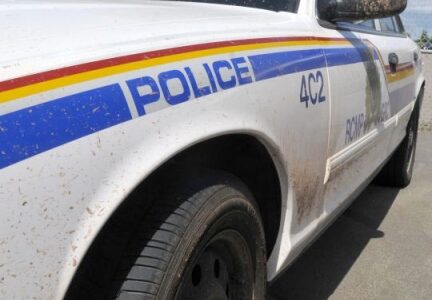Public discusses fate of Castlegar schools
More than 300 people were on hand last night to hear School District 20 (SD 20) representatives discuss school closure options that have arisen due to declining enrollment and subsequent funding cuts.
Provincial education funding is calculated on a per-student basis, and enrollment in the region over the past five years decreased by 789 students and is projected to decrease by another 823 students within the coming five years.
“We don’t have a crystal ball, but we’re pretty darned sure it’s going to be around 800,” said district superintendent Jean Borsa. “That’s over $four million we’re no longer going to have.”
The audience in the activity room of Stanley Humphries Secondary School included Castlegar’s mayor and four city councillors, as well as mayor and councillors from Warfield.
Although several issues were brought up by members of the public, including the proposed closure of Castlegar Primary School, the overwhelming sentiment expressed appeared to be a disinclination to have Grade 7 students moved to the local high school, as proposed by the school board.
Rhonda Shears, for example, said, “I do not feel it meets the developmental needs of children in Grade 6 and 7 to move them into high school.”
Shears went on to point out that kids of that age are more impressionable, and thus vulnerable to the more mature influences to which they would be exposed in a high school setting.
“I’m wondering of the district has considered reviving the concept of middle school?” she asked.
Marty Kooiman spoke as a parent of two elementary-school-aged girls, but his argument was perhaps given more weight by his role as an RCMP officer who has earned a reputation for his work with local youth. He said he was concerned for the safety and development of younger children thrust too young into a high school environment, describing worries of, “negative peer influences and harassment (of) smaller kids.”
One parent of a Grade 6 student added that the concerns are not just parental – that, in fact, her daughter and friends were actively afraid of attending the high school in their upcoming academic year.
Another argument against moving more kids into the high school was presented by Denise Pappin, who said there may be room in the classrooms of the high school – but there’s none to spare in the hallways, as the current crush of students travelling between classrooms is already reaching a breaking point.
“I understand we have to make better use of our facilities …but you have to facilitate the movement of these students, not just their classroom space,” she said.
Discussion also included questions regarding how much actual savings the proposed changes would represent – much of which was cleared up when Borsa explained that, first, money spent on heating, cleaning and maintaining empty classrooms is money taken away from programming for students and, second, the savings involved in closing a facility go beyond the facility itself and include the wages of staff (principals, librarians, etc) that each school needs but who aren’t currently serving full student populations in their given schools.
“We get what we get (in terms of funding),” Borsa said. “We can’t raise money. And we have been surprised on several occasions (by provincial cuts) that came out of the blue.
“There’s been a lack of ministry consultation – and sometimes, there’s been no consultation at all.”
In fact, a finger was pointed at the provincial government several times throughout the evening, as residents questioned just how much power the school district has in terms of funding decisions.
“I get the impression, from your presentation, that you’re powerless,” said one resident.
Another, James York, said he’s seen the city population grow, and knows the portion of property taxes being collected from area residents and businesses alike for education has likewise increased – while the student population has decreased and, with it, local education funding.
He suggested the municipal government, as collectors of the taxes, could be lobbying the province to see that school-tax money funneled back into education in this community.
The district board and staff stayed well past their 9 p.m. deadline, fielding questions and hearing comments until after 9:30 p.m., and invited residents to send written submissions via email and to visit the SD20 website to comment, ask questions, or read the original documents and subsequent community commentary (email to dnicoletti@sd20.bc.ca or visit www.sd20.bc.ca).
“We have, and will continue to, reply to all submissions,” said board chair Gordon Smith, explaining that next steps include, “exploring the viability of all suggestions,” another round of public meetings presenting a draft plan, then the formulation of a five-year plan.
He said the board is required to give six months notice of whatever plan they ultimately choose, which makes it possible, but not necessarily likely, that any changes will be implemented at the outset of the coming school year.
“We’re rapidly running out of time.”
Borsa added that the funding and enrollment numbers clearly illustrate that something has to give, and repeatedly challenged the community to answer one question, “If not this, then what?”
She said no decisions have yet been made, so now is the time to offer recommendations or ideas the board may not yet have considered.
























Comments